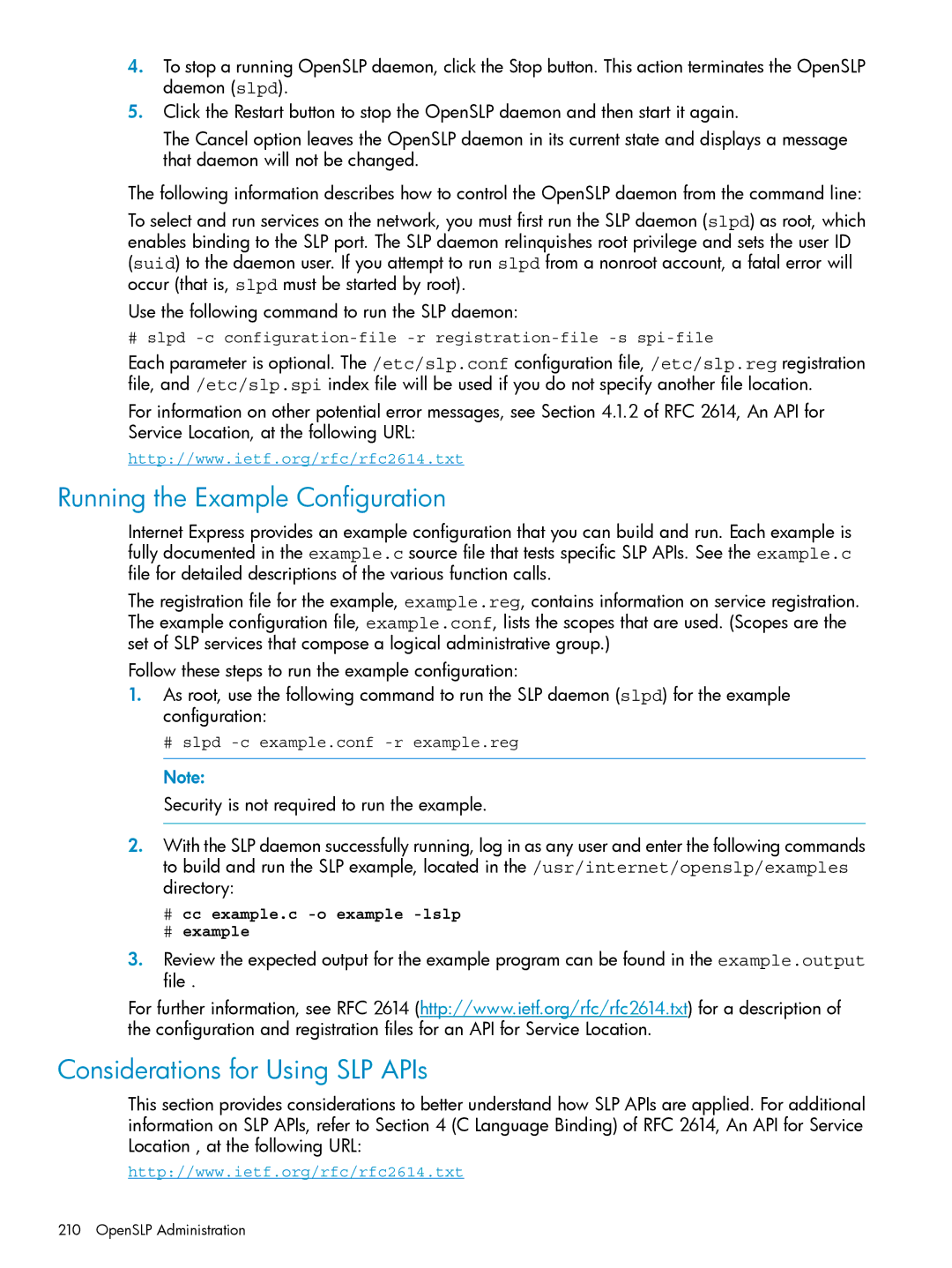
4.To stop a running OpenSLP daemon, click the Stop button. This action terminates the OpenSLP daemon (slpd).
5.Click the Restart button to stop the OpenSLP daemon and then start it again.
The Cancel option leaves the OpenSLP daemon in its current state and displays a message that daemon will not be changed.
The following information describes how to control the OpenSLP daemon from the command line:
To select and run services on the network, you must first run the SLP daemon (slpd) as root, which enables binding to the SLP port. The SLP daemon relinquishes root privilege and sets the user ID (suid) to the daemon user. If you attempt to run slpd from a nonroot account, a fatal error will occur (that is, slpd must be started by root).
Use the following command to run the SLP daemon:
# slpd
Each parameter is optional. The /etc/slp.conf configuration file, /etc/slp.reg registration file, and /etc/slp.spi index file will be used if you do not specify another file location.
For information on other potential error messages, see Section 4.1.2 of RFC 2614, An API for Service Location, at the following URL:
http://www.ietf.org/rfc/rfc2614.txt
Running the Example Configuration
Internet Express provides an example configuration that you can build and run. Each example is fully documented in the example.c source file that tests specific SLP APIs. See the example.c file for detailed descriptions of the various function calls.
The registration file for the example, example.reg, contains information on service registration. The example configuration file, example.conf, lists the scopes that are used. (Scopes are the set of SLP services that compose a logical administrative group.)
Follow these steps to run the example configuration:
1.As root, use the following command to run the SLP daemon (slpd) for the example configuration:
# slpd
Note:
Security is not required to run the example.
2.With the SLP daemon successfully running, log in as any user and enter the following commands to build and run the SLP example, located in the /usr/internet/openslp/examples directory:
#cc example.c
#example
3.Review the expected output for the example program can be found in the example.output file .
For further information, see RFC 2614 (http://www.ietf.org/rfc/rfc2614.txt) for a description of the configuration and registration files for an API for Service Location.
Considerations for Using SLP APIs
This section provides considerations to better understand how SLP APIs are applied. For additional information on SLP APIs, refer to Section 4 (C Language Binding) of RFC 2614, An API for Service Location , at the following URL:
http://www.ietf.org/rfc/rfc2614.txt
210 OpenSLP Administration
